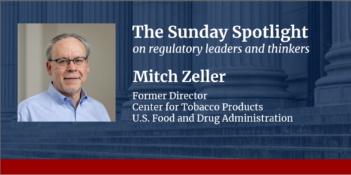
With two Medicare cases, the U.S. Supreme Court may change an important rule on deference to agency decisions.
Court cases can frequently confuse non-lawyers. Rarely, however, do judges openly admit to being confused. Yet, during oral arguments held earlier this month, the complexity of the Medicare system led U.S. Supreme Court Justice Stephen Breyer, who used to teach courses on regulation at Harvard Law School, to acknowledge that “the chances I understand it correctly are near zero.”
Breyer offered his comment in one of a pair of cases that raise highly technical issues about the law governing Medicare reimbursement to hospitals. These cases also raise important issues about how authority for making these determinations should be divided between courts and administrative agencies.
The first case, Becerra v. Empire Health Foundation, concerns a formula for extra Medicare payments to hospitals that provide care for large percentages of low-income patients. The formula for payments to these “disproportionate share hospitals” (DSHs) calculates days of treatment for patients eligible for Medicaid but not entitled to Medicare. Courts and the U.S. Department of Health and Human Services (HHS) had read “eligible” and “entitled” to have different meanings, but in 2005 HHS changed its reading of the terms and, consequently, its reimbursement formula for DSHs—prompting the litigation that now has reached the Supreme Court.
The second case, American Hospital Association (AHA) v. Becerra, involves a question about the law regulating Medicare reimbursement of drug costs for 340B hospitals—another category of hospitals that serve especially large proportions of low-income and uninsured patients. In 2018, HHS cut the compensation rate for these hospitals by 28.5 percent based on a change in its reading of the law respecting the statutory reimbursement formula for drug costs.
Both cases raise high stakes. HHS’s budget cuts in AHA reduced payments to 340B hospitals by an estimated $1.6 billion per year. And HHS’s interpretation in Empire reduces DSH hospitals’ payments by several billion dollars.
Money doubtlessly motivated the changes in HHS interpretations and the challenges to those changes, but the more significant reason these cases are important is because they may lead to revision of the rules about when and how much courts allow agencies to decide what statutes mean. The Supreme Court set out those rules 37 years in Chevron. v. Natural Resources Defense Council. Chevron says that courts should use “traditional tools of statutory construction” to decide what a law means, but if those tools yield no clear meaning, agencies should be presumed to have discretion to take actions consistent with a reasonable reading of the law.
Some courts have read Chevron as telling judges to defer broadly to agency interpretations of law. Others read Chevron as giving leeway to agencies only so far as it is reasonable to conclude that a law gave the agency discretion on a particular matter.
Critics of Chevron, such as Justice Neil Gorsuch, say that it allows agencies to supplant courts, which are supposed to interpret the laws. Critics also argue that Chevron encourages Congress to grant agencies broad discretionary authority that should remain with lawmakers.
Proponents of Chevron often say what Justice Breyer said in the Empire oral argument: even judges cannot always find the meaning of a statute to be clear. It is reasonable, Chevron’s proponents say, to let agencies make technical decisions, even if that looks like interpretation.
Recently, some of Chevron’s advocates have accused critics of wanting to reduce the size of government by limiting the authority of administrative agencies. But advocates and critics of the administrative state take positions on both sides of arguments about Chevron.
The Medicare cases currently before the Supreme Court—Empire and AHA—raise potential issues of Chevron deference. The U.S. Court of Appeals for the D.C. Circuit endorsed the HHS decision challenged in AHA, in large measure based on its conclusion that the decision merited Chevron deference. In Empire, however, the U.S. Court of Appeals for the Ninth Circuit decided that HHS’s decision was not entitled to deference. In the oral arguments for both AHA and Empire, the Supreme Court justices’ questioning focused on Chevron, and the Court could end up reshaping Chevron doctrine with its decisions in these two cases.
But these cases raise complicated legal issues. In commenting on the Empire case, Justice Breyer added that “these people are exhausted. Just like me, after reading this case.”
Despite the heat generated by the debate over Chevron deference, it is not clear exactly what form changed rules about agency deference would take. Nor is it even clear that changing the rules about deference will alter significantly the balance between courts and agencies in deciding the issues at stake in Empire and AHA. Scholars who have investigated Chevron’s importance have reached different conclusions on what difference the Chevron rule has made.
Like many old customs, how much Chevron mattered may not be known until it is gone. By that point, many more people may be exhausted along with Justice Breyer.



